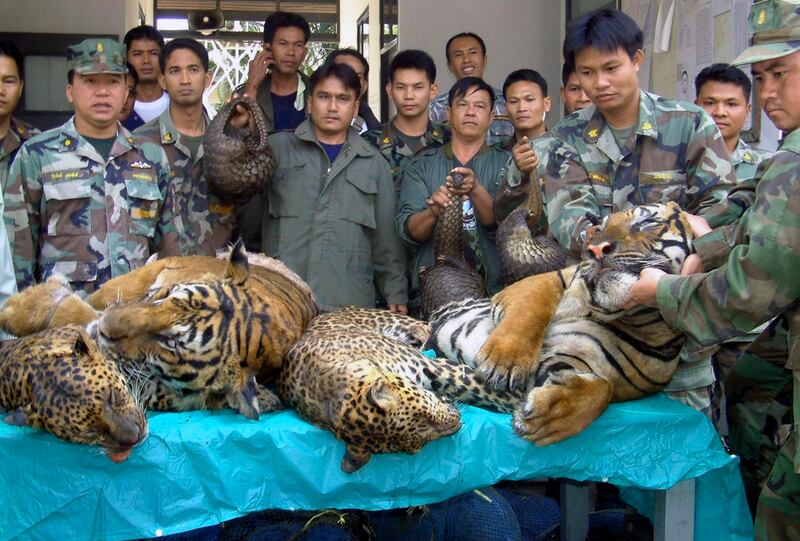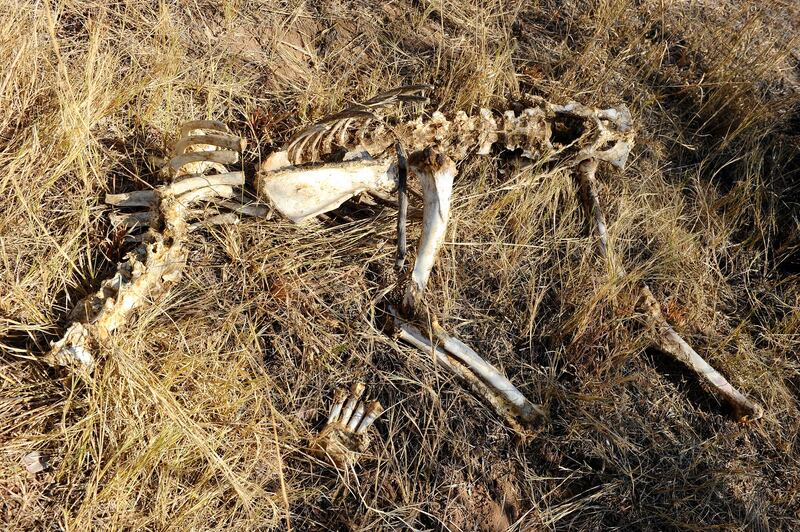Wildlife conservationists have raised a concern that Laos' recent importation of ten live lions from South Africa may be used to produce and export big-cat bones, a lucrative industry in the region in recent years.
“More information is needed to determine what the intention is behind the shipment of these live lions. The fear is that they may face a life of suffering for cruel exploitation,” said London-based World Animal Protection (WAP).
WAP urged Laos and South African authorities to promptly investigate the shipment, adding that if it is discovered to be illegal, the perpetrators should be brought to justice.
The group’s comment came after a Vientiane-based cargo company posted on its Facebook page on July 21 that it had safely transported 10 adult live lions from South Africa into Laos.
The post, accompanied by several photos, including one with a lion in a crate, was promptly deleted.
The logistics company, Air Planners Laos, said it had brought five female and five male lions to a local zoo for tourist attraction. They did not respond to RFA queries for more details.
On July 24, Lao officials told RFA’s Lao service that the animals were brought for the newly built Tham Pha Waterfall Zoo in Pak Ngeum district, in the capital Vientiane municipality.
The Lao government has issued permits to the zoo owners to import big wild animals – including tigers and lions – from overseas, while smaller animals would have to be acquired locally, they said.
The officials added that the lions are to be used as tourist attractions and for breeding, declining to confirm whether their cubs would be exported to other countries.
Conservation community ‘shocked’
The conservation community was “shocked,” suggesting that the “zoo” would be used as a breeding facility to produce and export big-cat bones, according to several wildlife activists and conservation experts in Laos, who all spoke to RFA on condition of anonymity due to fear of reprisal.
“You would not import five adult males if [you were] establishing a proper zoo. You’d most likely import two brothers and a few females. The importers want to speed breed,” one conservation expert said.
The cost of import, construction and upkeep of the facility is not financially feasible if it is just a zoo, especially considering that the location is away from any major tourist attractions, the expert added.
The expert’s view was echoed by other wildlife activists who said they had seen the premises or videos of it, and that the “zoo” facility setup is more conducive to breeding than to seeing animals.
The 2.5-square-meter (27-square-foot) dens are roughly constructed and interconnected with each other with an outside enclosure, they said, adding that the design of the cages and demographics of the imported lions indicate “factory breeding” purposes.

Another activist told RFA that it was “surprising how blatantly it was shared on social media, almost like they were bragging about what they’ve done.”
“It leads me to believe that all the legal covers have been met,” the activist said.
Separately, an unnamed official from one of the foreign embassies in Vientiane told RFA that the diplomatic community is concerned about potential illegal wildlife trade and animal cruelty.
The official said several embassies are looking into the import for additional details.
Lions replace tigers for bones
Laos is a party to the Convention on International Trade in Endangered Species, or CITES, a global multilateral treaty protecting endangered plants and animals. However, unlike tigers, lions are not on its protected species list and their parts are easier to legally trade with proper paperwork.
The commercial trade of tiger parts and derivatives is illegal, though experts say tiger breeding farms are still in business in Laos. Many are designated zoos but have never opened to the public.
Southeast Asia’s tiger bone industry, catering to Vietnam and China markets, has flourished since it first appeared in Laos in early 2000.
Tiger bones are used as ingredients in traditional Asian medicine, believed to possess healing properties. The demand led to poaching and drastic decline in tiger populations, from about 100,000 in the early 1900s to an estimated 4,500 individuals today.
China has implemented stricter regulations on the trade of tiger bones since 2007, though demand is still high. Lion bones emerged as an alternative among traders in recent years.
More than 8,000 captive lions in South Africa are part of a deadly supply chain, WAP said.
“Laos PDR plays a major role in receiving lion bone and skeleton shipments illegally exported from South Africa, and substantial evidence indicates that Laos PDR is a ‘clearing house’ for lion bone products,” the organization said.
In Laos, tiger farms have been banned since 2016 and there are no more wild tigers in the country's forests.
According to a 2018 report by the Johannesburg-based non-profit EMS Foundation, Laos is South Africa's largest big cat bone importer, but mostly for Chinese and Vietnamese buyers.
South African exports
WAP said between 2017 and 2020, 74 live lions were legally exported from South Africa to zoos in seven countries for commercial and captive breeding purposes, with more than two-thirds going to China for commercial purposes.
In June, a man about to board a flight to Vietnam was arrested at the Johannesburg Airport with five lion carcasses in his luggage. South Africa is currently reviewing its captive lion farming industry.

Activists also said Laos has ramped up the commercial breeding of wildlife legally in recent years, with a deal to provide long-tail macaques to Chinese pharmaceutical companies.
The Lao parliament also recently passed a new wildlife and aquatic law that not only allows, but encourages management of farming and utilization of wildlife.
“Wildlife farms are nothing new in Lao PDR, but the expansion and lack of oversight is a significant issue,” one expert said.
“Authorities lack capacity, protocol, mechanisms, or the will to inspect and monitor these farms to ensure that they adhere to the law and CITES.”
Translated by Sidney Khotpanya for RFA Lao service. Edited by Taejun Kang and Joshua Lipes.
